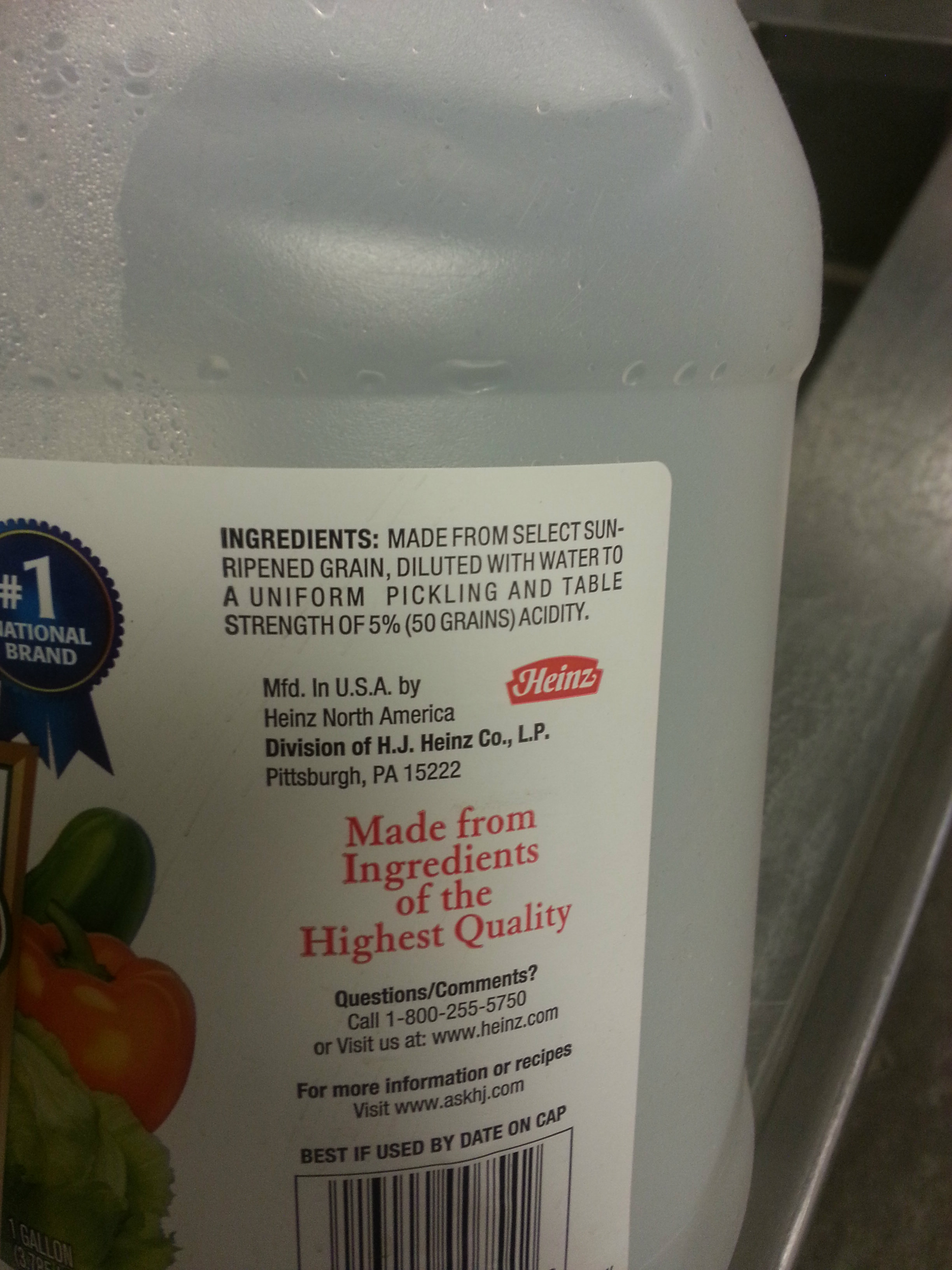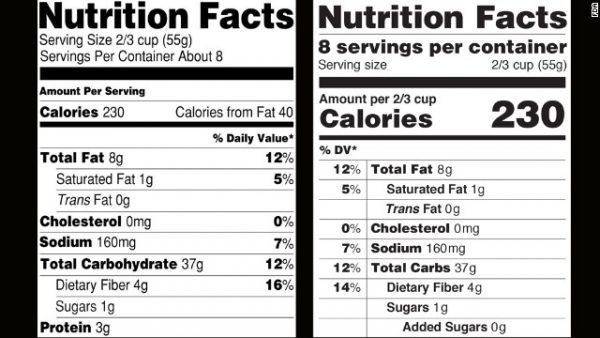45 what is not required on food labels
FDA Food Product Labeling & Packaging Requirements | ESHA Research The Food Allergen Labeling and Consumer Protection Act of 2004 (FALCPA) mandates that packaged food items must declare, in plain language, the presence of any major food allergens (Milk, Egg, Fish, Crustacean shellfish, Tree nuts, Wheat, Peanuts, Soybeans, Sesame) on the product packaging. What is not Required on a Food Label? (Complete Guide) According to FDA, the nutrients associated with common diseases, like blood pressure, heart problems, diabetes, and obesity, should be listed on the label. So, with such a consideration, the disclosure about calorie count, sodium, sugar, fats, carbohydrates, etc., is essential. You cannot ignore it.
Optional Nutrients On The Food Label - LabelCalc Dietary fiber. Sugars. Protein. Vitamin A. Vitamin C. Calcium. Iron. These nutrients are mandatory because the FDA considers them the most essential to either limit our intake of (in the case of cholesterol, sodium, and trans fat) or increase our intake of them (in the case of iron, Vitamin C, and dietary fiber).

What is not required on food labels
Understanding Food Labels | The Nutrition Source | Harvard T.H. Chan ... The information on food labels is intended to help consumers become savvy about their food choices. The front, back, and sides of a package are filled with information to inform us what the food contains and to provide guidance in making healthier selections of processed foods. ... These expiration dates are not required by federal law though ... PDF General Food Labeling Requirements - California required. Other label information, such as health claims and nutrient content claims, are voluntary. These label statements are based on the following statutes: 1. Fair Packaging and Labeling Act (FPLA) of 1967, 2. Federal Food, Drug, and Cosmetic Act (FD&C) 3. Nutrition Labeling and Education Act of 1990 (NLEA), 4. USDA ERS - Food Labeling In addition to the NFL, the report examines the USDA organic label, the raised without antibiotics label, the non-GMO label (advertising foods made without genetically engineered ingredients), and the Federal country-of-origin label (COOL). Beyond Nutrition and Organic Labels—30 Years of Experience With Intervening in Food Labels
What is not required on food labels. Guidance for Industry: Food Labeling Guide | FDA It is the responsibility for the food industry to remain current with the legal requirements for food labeling. All new regulations are published in the Federal Register (FR) prior to their... What is required on a food label? - USDA A meat and poultry label is required to contain 8 features. These are: the product name, inspection legend and est. number, handling statement, net weight statement, ingredients statement, address line, nutrition facts, and safe handling instructions. These requirements are found in the Code of Federal Regulations (9CFR 317.2/381 Subpart N). My Food Product: Do I Need Nutrition Facts On My Labels? Foods that contain insignificant amounts (insignificant means it can be listed as zero) of all required nutrients (foods that fall under this exemption include tea, coffee, food coloring, etc.). Foods with total packaging surface area available for labeling of less than 12 square inches. Labeling Requirements for Restaurants and Vending Machines To be covered, an establishment must be a restaurant or similar retail food establishment, as defined in the final rule. In addition, such establishment must: (1) be part of a chain of 20 or more...
What Is Required On A Food Label? - Chicago Tag While the meaning behind terms such as low fat (less than 3g of fat per serving), low cholesterol (20mg or less per serving) or zero trans fat (contains less than 0.5g per serving) aren't FDA-required disclosures on food labels, any such health claims must be backed up by laboratory testing and printed nutritionals. Which of the following is not required by law to be listed on a food label? Which of the following foods does not require a label? Raw fruits, vegetables, and fish are exempt from nutrition fact labeling. Foods that contain insignificant amounts (insignificant means it can be listed as zero) of all required nutrients (foods that fall under this exemption include tea, coffee, food coloring, etc.). Food Labeling - USDA The FDA assures that most prepared foods, such as bread, cereals, canned and frozen foods, snacks, desserts, drinks, etc., are safe, wholesome, and properly labeled. The National Organic Program (NOP), a regulatory program housed within the USDA Agricultural Marketing Service, develops organic food labeling standards U.S. FDA Food Labeling Regulations - Top 5 | Registrar A label may include other languages along with English, but if a foreign language is used anywhere on the label, all of the required information on the label must appear in that language as well. 5. Labels cannot bear inappropriate claims. FDA has strict regulations for claims made on food labels.
Information Required on a Food Label: What to Know Informational labels must have reasonable print size and be placed in a conspicuous area. In general, your type should be at least 1/16" high for the lower case letter "o." The letters cannot be three times as high as they are wide either. These are fairly obvious rules but they're important to follow. Menu Labeling Requirements | FDA The menu labeling requirements apply to restaurants and similar retail food establishments that are part of a chain with 20 or more locations. In addition, they must be doing business under the... Which information is not required on food labels? - AnswersToAll Which information is not required on food labels? Raw fruits, vegetables, and fish are exempt from nutrition fact labeling. Foods that contain insignificant amounts (insignificant means it can be listed as zero) of all required nutrients (foods that fall under this exemption include tea, coffee, food coloring, etc.). Food Labeling Basics - Food Quality & Safety The name and place of business of the food product's manufacturer, packer, or distributor statement must follow the ingredients statement and may consist of a business name, city, and zip code if the business' street address may be found in a public directory under the business name. Otherwise, the complete address must be found on the label.
FAQ - foodlabels Specifically, nutrition labeling is not required if the product will be sold only by retailers that have total annual gross sales of $500,000 or less or total annual food gross sales of $50,000. A small business exemption notice does not have to be filed with FDA in this case.
Food Labeling & Nutrition | FDA Food labeling is required for most prepared foods, such as breads, cereals, canned and frozen foods, snacks, desserts, drinks, etc. Nutrition labeling for raw produce (fruits and vegetables) and...
Food Labeling Requirements for FDA Compliant Label Design Food allergens must be declared prominently, as required by the Food Allergen Labeling and Consumer Protection Act (FALCPA). The eight major food types that cause allergies are milk, egg, fish, Crustacean shellfish, tree nuts, wheat, peanuts and soybeans. We shall discuss food allergen labeling requirements in the next blog.
Labeling Policies | Food Safety and Inspection Service labeling required under this subchapter and the net quantity of contents is shown with the same prominence as the most conspicuous ... (outside of the Nutrition Facts panel) on the labeling of meat and poultry products. However, the nutrition labeling regulations in Title 9, Code of Federal Regulations (9 CFR), Subpart B, Section 317.300 317 ...
PDF Food Labeling Guide Additionalcopies are available from: Office of Nutrition, Labeling, and Dietary Supplements HFS-800 Center for Food Safety and Applied Nutrition Food and Drug Administration 5100 Paint Branch...
Does all food need a label? - Safe Food & Water Essentially, there are five components necessary on the label of a licensed food product: The statement of identity The product's net weight Manufacturer's address Nutrition facts (there are some exemptions to requirements for the nutrition facts) Ingredient list, which includes allergen labeling
What information is NOT required on food labels? A. Nutrition facts The map shows the prevalence of food insecurity in the United States. A map labeled Prevalence of Food Insecurity, Average 2012 to 2014. The following … notes have a food insecurity above U S average: Maine, Ohio, Kentucky, North Carolina, Tennessee, Alabama, Mississippi, Missouri, Arkansas, Louisiana, Kansas, Oklahoma, Texas, and Oregon.
Nutrition Labels 101: What's Required? What's Optional? Total carbohydrates is a required listing unless there is less than 1 gram, at which point it can be expressed as "contains less than 1 gram," or if less than 0.5 grams per serving, it can be expressed as zero. Sugars are the sneaky nutrient found naturally in many "healthy" foods, including fruit and milk.
Food Allergen Labeling Law Requirements and Exceptions In addition, manufacturers must use use the "common or usual name" of the allergen. For example, "egg" must be called "egg" on food labels instead of "ovalbumin.". The warning must be listed in the same size type as the rest of the ingredients on the label. The common name must appear either: In parentheses after the ingredient name.
USDA ERS - Food Labeling In addition to the NFL, the report examines the USDA organic label, the raised without antibiotics label, the non-GMO label (advertising foods made without genetically engineered ingredients), and the Federal country-of-origin label (COOL). Beyond Nutrition and Organic Labels—30 Years of Experience With Intervening in Food Labels
PDF General Food Labeling Requirements - California required. Other label information, such as health claims and nutrient content claims, are voluntary. These label statements are based on the following statutes: 1. Fair Packaging and Labeling Act (FPLA) of 1967, 2. Federal Food, Drug, and Cosmetic Act (FD&C) 3. Nutrition Labeling and Education Act of 1990 (NLEA), 4.
Understanding Food Labels | The Nutrition Source | Harvard T.H. Chan ... The information on food labels is intended to help consumers become savvy about their food choices. The front, back, and sides of a package are filled with information to inform us what the food contains and to provide guidance in making healthier selections of processed foods. ... These expiration dates are not required by federal law though ...











Post a Comment for "45 what is not required on food labels"